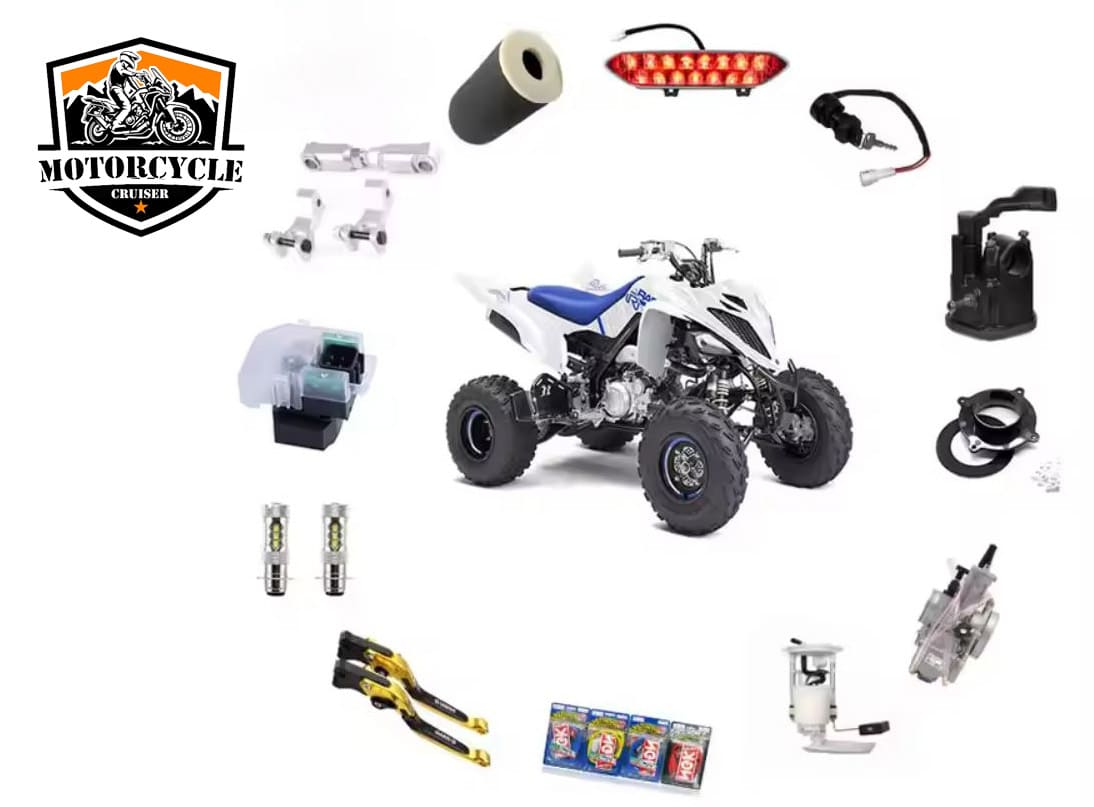Motorcycles and ATVs (All-Terrain Vehicles) are popular modes of transportation and recreation. To keep these vehicles running smoothly, it’s essential to understand the various parts that make up these machines. In this article, we’ll delve into the world of motorcycle and ATV parts, highlighting the most important components, their functions, and how to maintain them. We’ll also provide valuable resources for further reading.
Introduction
Motorcycles and ATVs are complex machines with numerous parts working together to ensure optimal performance. Whether you’re a seasoned rider or a beginner, understanding these parts can help you maintain your vehicle and enhance your riding experience.
Engine Components
The engine is the heart of any motorcycle or ATV. It consists of several crucial parts:
- Cylinder: The cylinder is where the fuel combustion takes place. It’s essential for generating power.
- Piston: The piston moves up and down within the cylinder, converting fuel into mechanical energy.
- Crankshaft: The crankshaft converts the piston’s linear motion into rotational motion, driving the vehicle forward.
- Camshaft: The camshaft controls the opening and closing of the engine’s valves, ensuring proper fuel and air intake.
For more detailed information on engine components, you can refer to [this resource].
Transmission System
The transmission system is responsible for transferring power from the engine to the wheels. Key components include:
- Clutch: The clutch engages and disengages the engine from the transmission, allowing for smooth gear changes.
- Gearbox: The gearbox contains various gears that control the vehicle’s speed and torque.
- Drive Chain/Belt: The drive chain or belt transfers power from the gearbox to the rear wheel.
Understanding the transmission system is crucial for maintaining your motorcycle or ATV. For further reading, check out [this article].
Suspension System
The suspension system ensures a smooth and comfortable ride by absorbing shocks and vibrations. Key components include:
- Forks: The front forks support the front wheel and absorb shocks from the road.
- Shock Absorbers: These components absorb and dampen the impact of bumps and rough terrain.
- Swingarm: The swingarm connects the rear wheel to the frame and allows for controlled movement.
Proper maintenance of the suspension system is vital for a safe and enjoyable ride.
Braking System
The braking system is essential for safety, allowing you to slow down or stop your vehicle. Key components include:
- Brake Pads: Brake pads create friction against the brake discs, slowing down the vehicle.
- Brake Discs: Brake discs are attached to the wheels and provide a surface for the brake pads to grip.
- Brake Calipers: Brake calipers house the brake pads and apply pressure to the brake discs.
Regular inspection and maintenance of the braking system are crucial for safe riding.
Electrical System
The electrical system powers various components of the motorcycle or ATV, including the ignition, lights, and battery. Key components include:
- Battery: The battery provides electrical power to start the engine and run accessories.
- Ignition System: The ignition system generates the spark needed to ignite the fuel-air mixture in the engine.
- Lights: Lights ensure visibility and safety, especially during night rides.
Maintaining the electrical system is essential for reliable performance.
Exhaust System
The exhaust system directs harmful gases away from the engine and reduces noise. Key components include:
- Exhaust Pipe: The exhaust pipe channels gases away from the engine.
- Muffler: The muffler reduces noise produced by the exhaust gases.
- Catalytic Converter: The catalytic converter reduces harmful emissions from the exhaust gases.
Regular inspection of the exhaust system ensures compliance with environmental regulations and optimal performance.
Tires and Wheels
Tires and wheels are critical for traction and stability. Key components include:
- Tires: Tires provide grip and absorb shocks from the road.
- Wheels: Wheels support the tires and provide a surface for mounting them.
- Rims: Rims are the outer edges of the wheels that hold the tires in place.
Proper tire maintenance, including regular checks for wear and tear, is essential for safe riding.
Conclusion
Understanding the various parts of motorcycles and ATVs is crucial for maintaining these vehicles and ensuring a safe and enjoyable riding experience. Regular inspection and maintenance of engine components, transmission systems, suspension systems, braking systems, electrical systems, exhaust systems, and tires and wheels are essential for optimal performance.


